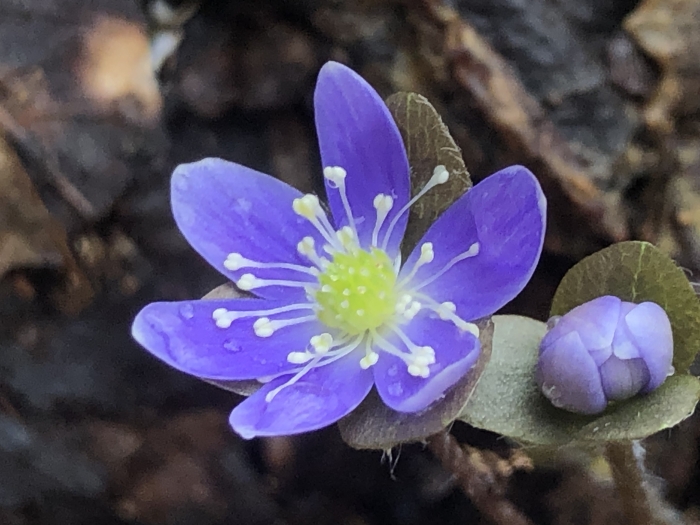Liverleaf
(Hepatica nobilis)
Liverleaf (Hepatica nobilis)
/
/

© Bill Sheehan
CC BY-SA 4.0
Image By:
© Bill Sheehan
Recorded By:
Copyright:
CC BY-SA 4.0
Copyright Notice:
Photo by: © Bill Sheehan | License Type: CC BY-SA 4.0 | License URL: http://creativecommons.org/licenses/by-sa/4.0/ | Uploader: bill_sheehan | Publisher: iNaturalist |












































Estimated Native Range
Summary
Hepatica nobilis, commonly known as Liverleaf, is a perennial herb that retains its leaves throughout the year, often considered semi-evergreen due to its foliage persisting into winter. It is native to deciduous woodlands and forest floors across Europe and the Eastern United States. Typically, Liverleaf reaches a modest height of 5–15 cm (2–6 in). The plant features a basal rosette of leaves and flowers that emerge directly from the rhizome. Leaves are trifoliate, resembling a liver in shape, which is the origin of its common name. The glossy, leathery leaves are dark green with whitish stripes on the upper surface, while the underside can be violet or reddish-brown. During or after the flowering period, new leaves develop and last through the winter. The flowers of Hepatica nobilis are quite showy, blooming in shades of blue, purple, pink, or white during the late winter to early spring. Each flower consists of five to ten petal-like sepals and three green bracts, creating a striking display against the forest floor.
Liverleaf is valued for its early spring flowers and its ability to provide winter interest in the garden. It is often used in woodland gardens, rock gardens, and shaded borders due to its preference for dappled sunlight and its low-growing, ground-covering habit. While it can tolerate a range of light conditions, from full sun to part shade, it thrives best in partial shade with well-drained, humus-rich soil. Liverleaf is relatively low maintenance but benefits from a layer of leaf mulch to mimic its natural forest habitat. It is generally pest and disease-free but can be susceptible to leaf spot and root rot if grown in poorly drained soils.CC BY-SA 4.0
Liverleaf is valued for its early spring flowers and its ability to provide winter interest in the garden. It is often used in woodland gardens, rock gardens, and shaded borders due to its preference for dappled sunlight and its low-growing, ground-covering habit. While it can tolerate a range of light conditions, from full sun to part shade, it thrives best in partial shade with well-drained, humus-rich soil. Liverleaf is relatively low maintenance but benefits from a layer of leaf mulch to mimic its natural forest habitat. It is generally pest and disease-free but can be susceptible to leaf spot and root rot if grown in poorly drained soils.CC BY-SA 4.0
Plant Description
- Plant Type: Herb
- Height: 0.3-0.8 feet
- Width: 0.7-1 feet
- Growth Rate: Slow
- Flower Color: Blue, Pink, Purple, White
- Flowering Season: Spring
- Leaf Retention: Evergreen
Growth Requirements
- Sun: Part Shade
- Water: Medium
- Drainage: Fast, Medium, Slow
Common Uses
Bee Garden, Border Plant, Butterfly Garden, Drought Tolerant, Erosion Control, Low Maintenance, Rock Garden, Showy Flowers
Natural Habitat
Deciduous woodlands and forest floors
Other Names
Common Names: Liverwort , Kidneywort , Pennywort , Common Hepatica , Blå Anemone , Leberblümchen , Blåsippa
Scientific Names: Hepatica nobilis , Anemone hepatica , Hepatica triloba , Hepatica nobilis f. variegata , Anemone praecox , Anemone triloba , Hepatica hepatica , Anemone hepatica var. hispanica , Hepatica nobilis var. nipponica , Anemone hepatica f. nipponica
GBIF Accepted Name: Hepatica nobilis Schreb.